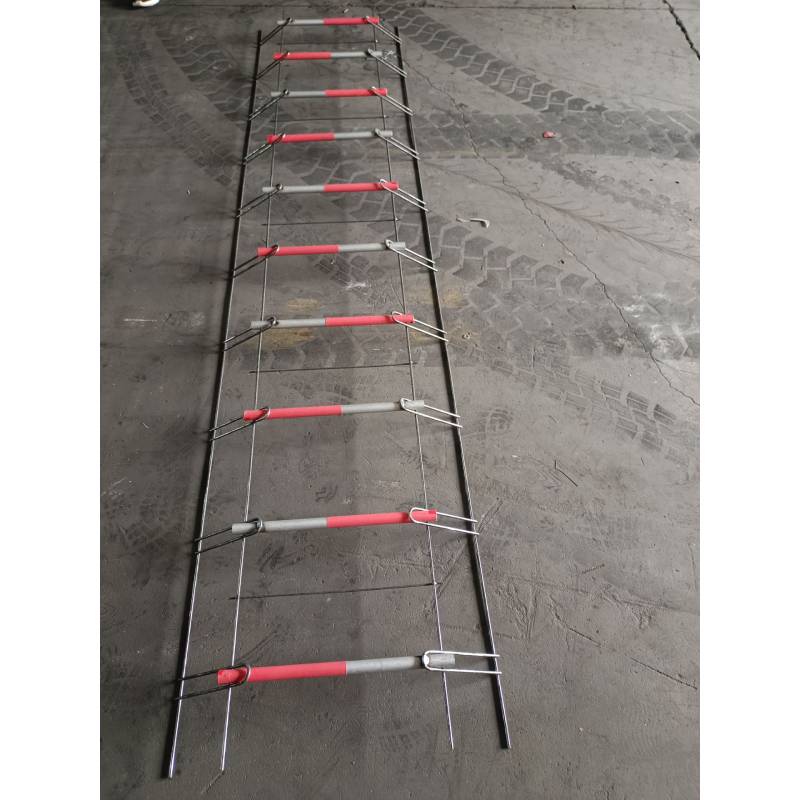
- Mobile Phone
- +8613931874955
- sales@cntcmetal.com
plant support
The Significance of Plant Support in Sustainable Gardening
In the world of gardening, the notion of plant support extends beyond mere aesthetic appeal; it is a fundamental component of sustainable planting practices. The physical support provided to plants plays a crucial role in promoting healthy growth, increasing yield, and ensuring a thriving ecosystem. This article delves into the various aspects of plant support, its significance in gardening, and techniques that promote both plant health and environmental sustainability.
One of the primary functions of plant support is to ensure the structural integrity of plants as they grow. Many plants, such as tomatoes, peppers, and peas, naturally look for alternative structures to cling to or lean on as they grow. Using stakes, trellises, or cages can help these plants grow upwards rather than sprawling on the ground. This vertical growth not only maximizes space but also enhances air circulation, reducing the risk of disease. Healthy airflow around the plants minimizes moisture accumulation, which can lead to fungal infections and other plant ailments.
Furthermore, supporting plants adequately often leads to increased sunlight exposure. In dense garden settings, taller plants can overshadow shorter ones, depriving them of essential sunlight. By utilizing support systems, gardeners can organize their plants vertically, ensuring that even the shorter varieties receive adequate light, which is crucial for photosynthesis. Proper sun exposure enhances the plants’ ability to produce energy, leading to vibrant flowers and fruits.
plant support

Another vital aspect of plant support is its impact on yield
. When fruiting plants, such as cucumbers and melons, are adequately supported, they are less likely to suffer from rot or pest infestations associated with ground contact. The risk of damage from pests is diminished when fruits are elevated from the soil. Additionally, well-supported plants can produce a greater number of fruits, leading to more substantial harvests. As the gardening community becomes increasingly aware of food security issues, maximizing yield through effective support techniques is a valuable practice.Beyond the practical benefits, using plant support systems can lead to more sustainable gardening practices. Traditional gardening often involves the use of synthetic materials that may not be environmentally friendly. However, there is a wealth of options available for creating plant supports that prioritize sustainability. Gardeners can use natural materials like bamboo, wood, or recycled materials such as old fencing or pallets to create support structures. These eco-friendly solutions not only serve their purpose but also reduce waste and promote a more sustainable gardening ethos.
Incorporating plant support into gardening practices can also facilitate biodiversity. By creating vertical gardens with supports, gardeners can cultivate a broader variety of plants in smaller spaces, encouraging a diverse ecosystem. This biodiversity is essential for developing a balanced garden environment, fostering beneficial insects, and reducing the prevalence of harmful pests.
In conclusion, plant support is an integral aspect of effective and sustainable gardening. By providing structural support, promoting healthy growth, increasing yield, and encouraging biodiversity, plant support systems contribute significantly to the overall success of a garden. With the growing emphasis on sustainable practices and food security, understanding the importance of supporting plants can help gardeners make informed decisions, contributing to a healthier planet. Whether starting a new garden or improving an existing one, incorporating effective plant support is a step toward a more sustainable future in gardening.
share:
-
Why Sacrificial Formwork Is Redefining Underground ConstructionNewsJun.06,2025
-
The Structural Dynamics of Modern Concrete: How Snake Spacers Revolutionize Flexible ReinforcementNewsJun.06,2025
-
Snake Spacers Smart-Lock Concrete Reinforcement with Surgical PrecisionNewsJun.06,2025
-
Snake Spacers: Reinforcement Precision for Modern Concrete ProjectsNewsJun.06,2025
-
Snake Spacers Powering Concrete's Structural DNANewsJun.06,2025
-
Slither into Success: Snake Spacers' Precision Bite for Unbreakable ReinforcementNewsJun.06,2025
-
Sacrificial Formwork: Building Stronger, Faster, and Safer StructuresNewsJun.06,2025



















